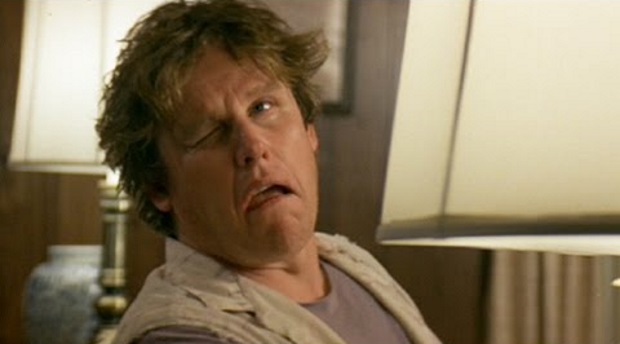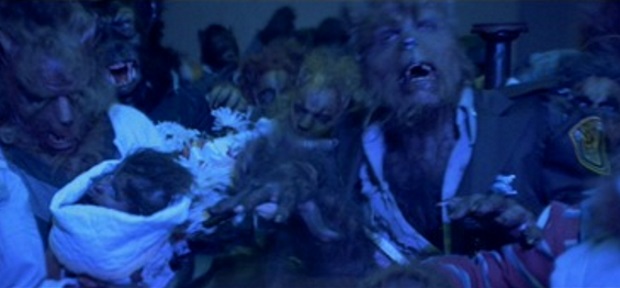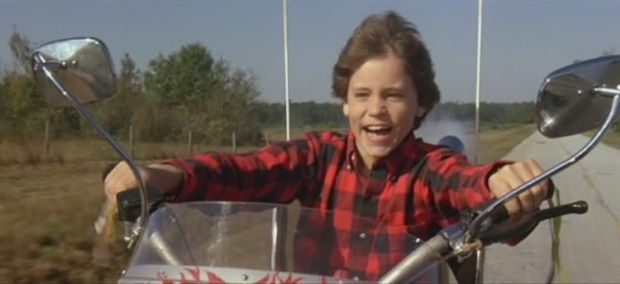Revisiting the film of Stephen King’s Silver Bullet
Our lookbacks at the film adaptations of Stephen King arrive at Silver Bullet, starring Gary Busey...
This article comes from Den of Geek UK.
The film: Horrific murders start taking place with mutilated bodies found across the small community of Tarker’s Mills, causing widespread panic. Sheriff Joe Haller (Terry O’Quinn) is out of his depth and, with Reverend Lester Lowe (Everett McGill), trying to stop the townsfolk forming a militia to go after whoever is doing the killings. In the middle of it all is wheelchair-bound Marty (Corey Haim) who starts to suspect there might be a real monster, perhaps a werewolf, who is committing the killings. Together with his Uncle Red (Gary Busey, in typical form), and his begrudging older sister, Jane (Megan Follows), they form a plan to try and stop the wolf.
One of Stephen King’s major skills as a horror writer is to take the usual kind of scares and render them into something new, or something more applicable to a contemporary setting. ‘Salem’s Lot’s treatment of vampires is one such example and Cycle Of The Werewolf, on which Silver Bullet is based, is another. King likes to mesh the traditional with the familiar, bringing the werewolf into the suburbs and unleashing him on the poor, unsuspecting townsfolk. He takes on the screenplay duties once again here, with Dan Attias as director for the only feature film of his career.
Silver Bullet is largely a fun film, though perhaps lacking the spark that better films on this watch so far have had, perhaps due to its identity crisis. Half of it seems trying to work towards a small town American gothic, particularly in the second werewolf attack, where even the home doesn’t prove safe. Adult Jane’s narration feeds this; her tale is one of a monster threatening her family and the way in which the event cements her affection for her brother, rather than disrupts it. The other goes for a more comedic schlock horror, where gore is liberally applied and performances seem larger than life (looking at you, Mr Busey).

That tonal conflict is no more apparent than in the scene in the woods, during which the town militia are attempting to hunt down the monstrous killer. Mist swirls through the trees and covers the ground. Visibility is low and the moon is providing a ghostly light for the proceedings. But as the men begin to be picked off one by one, a gleeful black comedy takes over the scene as hunter after hunter is grabbed by a werewolf paw and the last we see is fear caricatured across their expression. It’s a solid set piece and almost karmic comeuppance for the gung-ho vigilantes, but it exemplifies a film that’s not quite sure of where it stands.
There are other gnarly attack sequences in here that aren’t particularly scary, but some inventive violence raises a goosebump or two. Claws scrape down skin in graphic detail as blood spurts everywhere, one man is impaled on a broken floorboard as the werewolf drags him down beneath the floor, and there is a great nightmare sequence as Reverend Lowe watches in horror as his congregation transforms into werewolves before him. But the film is careful to show only what it needs to; when the body of Marty’s friend Brady is found, we simply see the bloody kite found by him and then his father’s howls of anguish rather than anything graphic with the boy himself.

The same goes for the werewolf, which is mostly seen in glimpses, close-ups, or reflections, manifesting that lurking sense of menace without becoming too obvious too fast. King made clear his intention that the werewolf should be enigmatic and vague and the film adheres to this, rarely offering us a big look at the monster of Tarker’s Mills. This could also be partly to do with the fact that the movie began shooting before the werewolf suit was finalised, owing to producer Dino de Laurentiis having issues with Carlo Rambaldi’s design. They were to later agree on the suit, worn by McGill for the majority of the wolf performance; Rambaldi’s effects work is a little dated, but still effective and the werewolf transformations, only twice seen in any great detail, help to make the mystery of the monster stick.
Silver Bullet benefits most from its strong cast. Haim displays the charisma and charm that would go on to fuel his 80s star status as the observant Marty, who still manages to get himself into all kinds of scrapes despite his limited movement. It’s also a credit to Haim that he isn’t entirely outshadowed by Busey’s larger-than-life performance as the hard-drinking, fast-talking Uncle Red. He ad-libbed much of his dialogue in the movie, something which Attias and King were happy to allow. His more creative linguistic flourishes can jar with King’s scripted dialogue, but he’s clearly having too much fun to worry about that.

Elsewhere in the cast, Terry O’Quinn’s Sheriff Haller works well as a yardstick against which the increasing hysteria of the town can be compared. O’Quinn’s weariness with the fruitless investigation as well as having to deal with a bloodthirsty mob out for vengeance is a welcome grounding against the more outlandish moments. And finally, McGill is always a treat in villainous roles, whether tortured bad guy or outright evil. He handles the shifts for Reverend Lowe well, measuring the performance throughout the film from the calm Reverend to the homicidal wolf and the degrees in between. He’s an actor capable of projecting something sinister without doing a lot and the film takes great advantage of this.
Silver Bullet’s a solid entry into the Stephen King film canon, if not a particularly sparky one. It never quite resolves what it wants to be, but a sense of humour, a game cast, and some clever use of a werewolf makes it a mostly fun watch.
Scariest moment: Poor Stella Randolph. Pregnant and abandoned, she’s in the middle of a suicide attempt when the werewolf bursts into her bedroom. The ensuing attack is particularly grisly.
Musicality: Joe Chattaway’s score is probably the most conventional of the ones heard so far. There’s the usual high-pitched strings at work, but there is also a neat werewolf howl running through the score that’s a clever little intricacy within the music.
A King thing: Small town America. Tarker’s Mills feels like every hallmark of the traditional King community is packed in, complete with beleaguered Sheriff, an abusive father, and knowing kids ready to fight the evil that might come their way. Naturally, there’s also the monstrous menace terrorising the town from within.
Join me next time, Constant Reader, for Maximum Overdrive…
